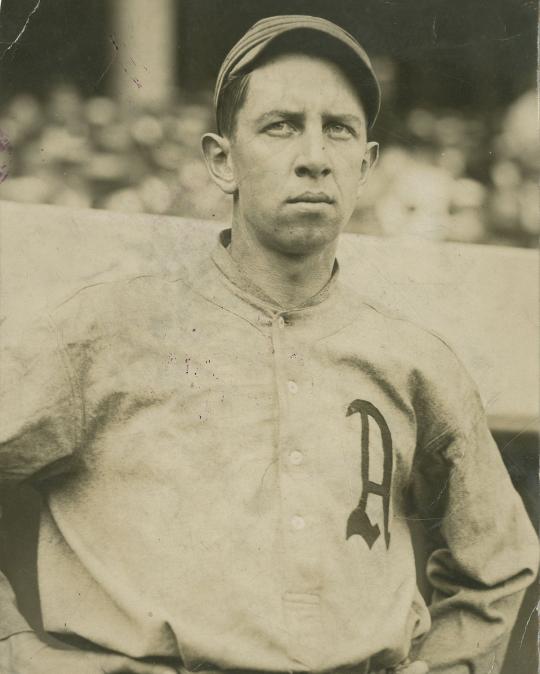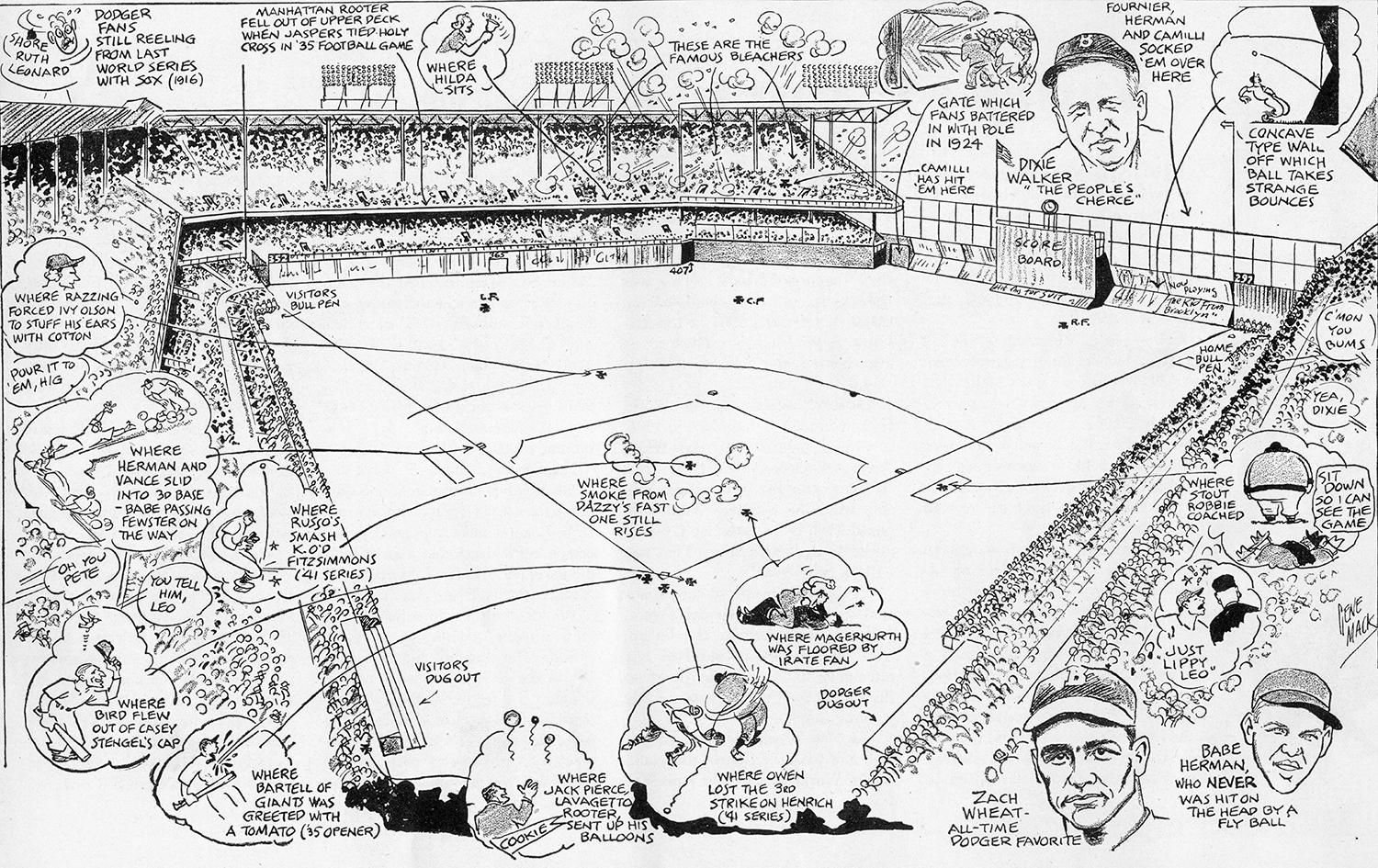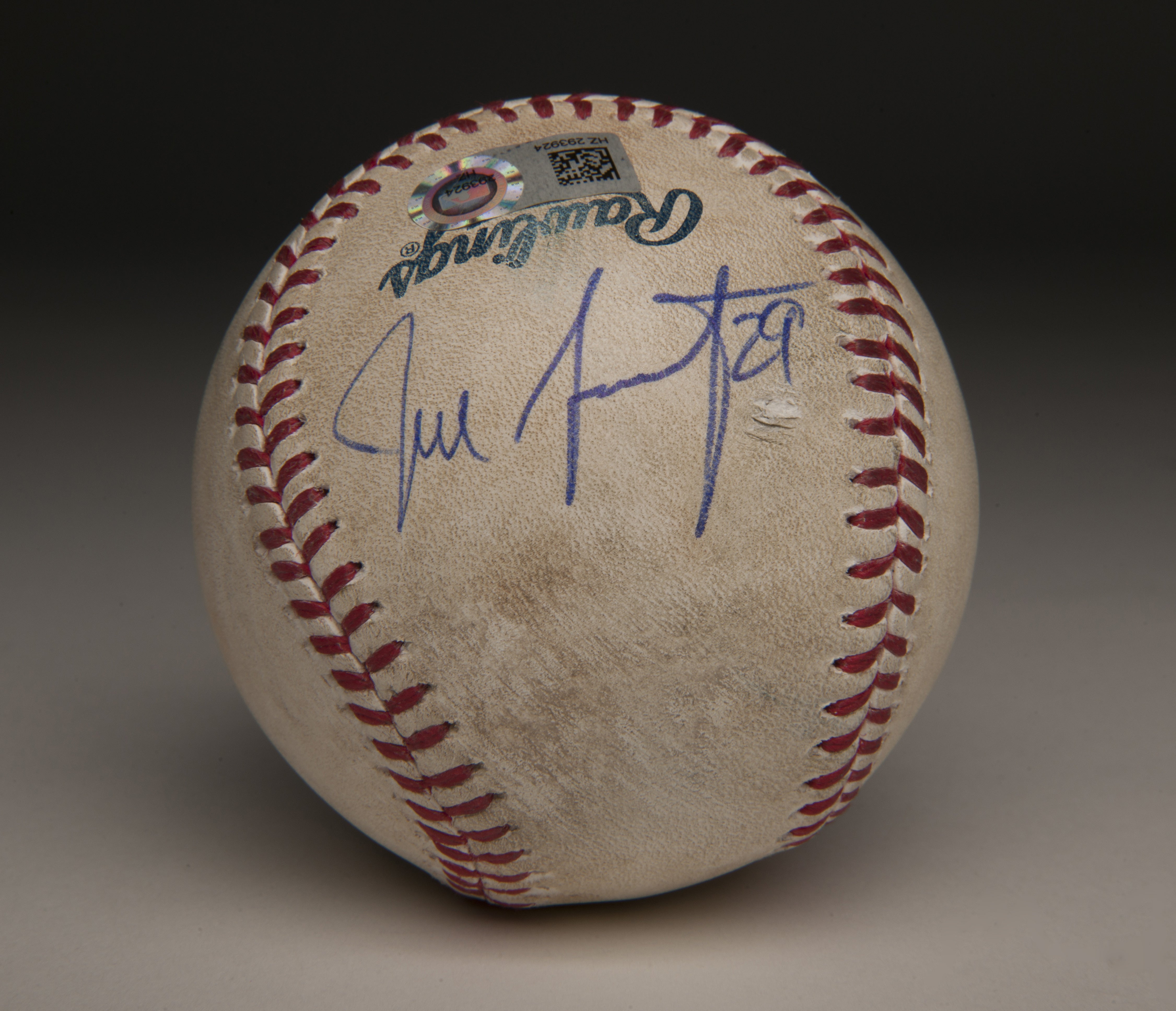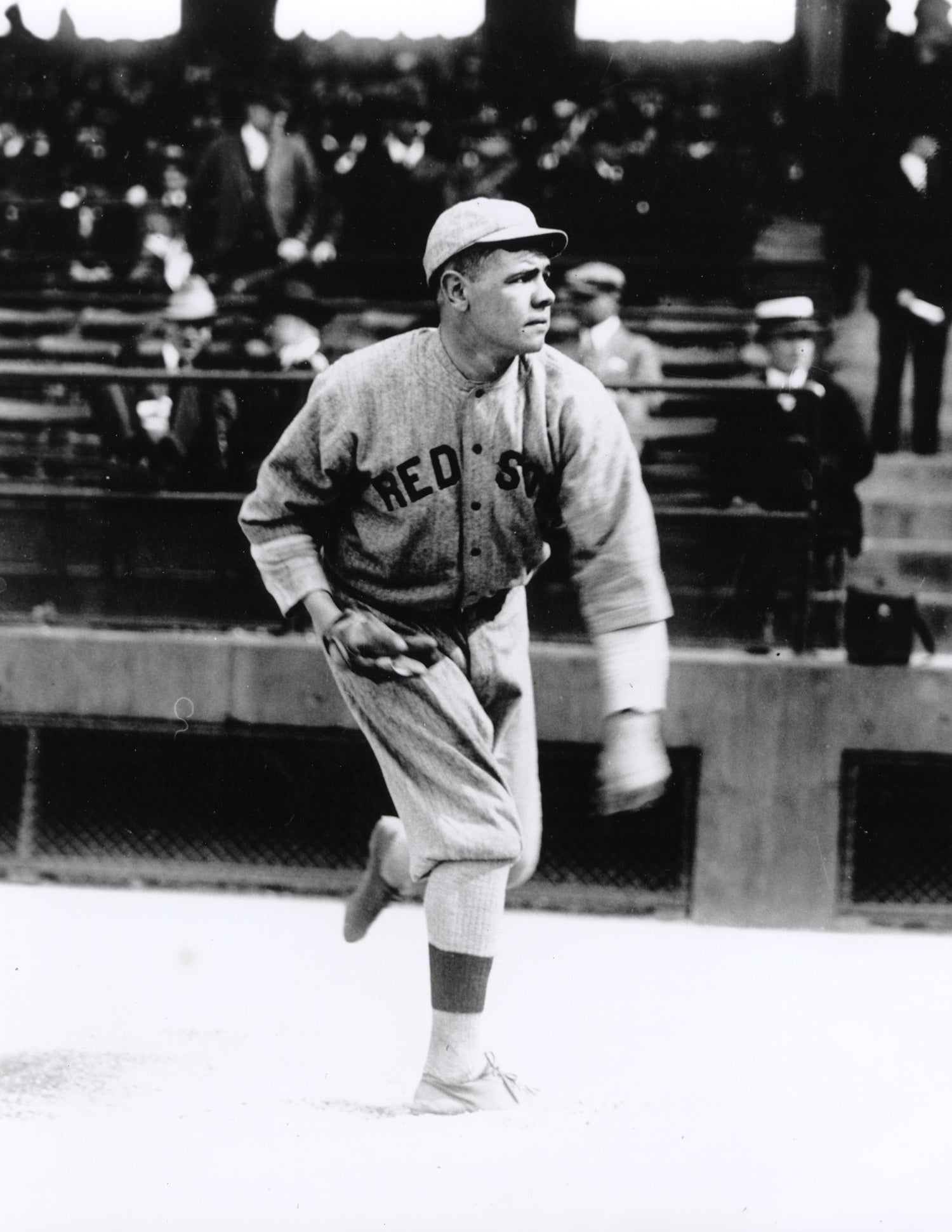- Home
- Our Stories
- #Shortstops: Photographic inspirations for Gene Mack cartoons donated to Hall of Fame
#Shortstops: Photographic inspirations for Gene Mack cartoons donated to Hall of Fame
To avid readers of the Boston Globe from the 1920s through the 1950s, the name Gene Mack would have been synonymous with some of the finest illustrations in newspapers during that time period.
Many of those original illustrations have made their way, over the years, into the library collection of the National Baseball Hall of Fame and Museum.
Now, thanks to the generosity of Mr. Mack’s grandson, Dan Margarita, several dozen photographs, which Mack used as source material for his drawings, are also a part of the Hall’s library collection.
“It was just sitting in a box, and every now and then, it’s nice to look through them,” Margarita noted. “I’ve treasured them, but I knew that they really belonged in the Hall of Fame. They could take care of them much better than I could. As much as it was painful and a little emotional to part with them, I knew that was where they really belonged.”
Hall of Fame Membership
There is no simpler, and more essential, way to demonstrate your support than to sign on as a Museum Member.
Mack, born in 1890 just outside Boston as Eugene McGillicuddy, played amateur and semi-professional baseball in the Boston area. Following high school, Mack joined an engraving shop, where he learned how to draw. This led to a part-time gig with the Globe as a commercial artist, a position which eventually turned full-time, and Mack’s illustrations soon began to appear on a regular basis.
Not only did Mack illustrate the sporting news of the day, he also drew graphics for some of the fiction stories which the Globe printed every day.
Among his most famous sketches were illustration of each of the major league ballparks, including each ballpark’s most historic plays and moments, as well as its noteworthy features. These drawings were eventually published in a book and served as an inspiration to a young Margarita.
“I grew up copying his drawings from his … ballparks book and many other things,” Margarita said. “I grew up with his drawings, with his work. So, it’s really just part of me in a way.”
When the series of ballpark sketches were published and sold nationwide, a new group of baseball fans began to appreciate Mack’s work. One fan even wrote into the Sporting News to thank them for providing a look at ballparks not easily seen or visited by some baseball fans.
“I think people don’t realize today, in this day of cable TV, ESPN, and the Internet, is that people could not just read about what happened in the game,” Margarita commented. “They could, in a way, see through his cartoons what happened.”
Not all of Mack’s illustrations found their way to Cooperstown. Some remained within the family and served as a source of pride for Mack’s relatives, many of whom still reside in the Medford, Mass., area.
“My aunt had a tremendous one over her mantle, over her fireplace, of Babe Ruth, which was larger than much of his other ones,” Margarita recalled. “It was a great cartoon and every time you went my aunt’s, you saw it, and you loved it, and really meant a lot to all of us. We all loved seeing it. It was kind of like the centerpiece of the living room in their house.”
The photos Margarita donated made their way to him through his family – several members of whom, including Margarita himself, went into the art field. He said he gets the art gene from both sides of his family – his father, Bob, was an All-Pro for the Chicago Bears football team in 1945 and later became a watercolor artist.
“My grandmother predicted that in each of the families that their kids had, there would be at least one artist, and there was,” he noted.
But Margarita never had the chance to meet his grandfather, the artistic inspiration for so many of his descendants.
“Unfortunately he passed away before I was born,” Margarita said of Mack. “But of course I grew up with his drawings and so many stories I heard about him – not just what a great artist he was but what a wonderful person.”
Mack spent over 35 years at the Globe, passing away in July 1953 due to a long illness. He received many posthumous honors, including Medford (Mass.) High School dedicating its gymnasium in his honor. (Mack was a huge supporter of scholastic athletics.) The Boston chapter of the Baseball Writers’ Association of America also dedicated its annual dinner, as well as a trophy for the Red Sox’s most valuable player, in Mack’s memory.
Gene Mack was a cartoonist for the Boston Globe for over 35 years. Pictured above, his depiction of the Brooklyn Dodgers' Ebbets Field. Digital Collection
According to Kelli Bogan, Manager of the Hall of Fame’s Photo Archives, the approximately 55 photos date from about 1900 to the 1930s and 1940s.
Mostly believed to be photographs taken by wire services, “many of these photos are rare, ones we have never seen before, which will help us to further document the pictorial history of baseball,” Bogan noted.
Holding 250,000 photographic images, it is always noteworthy when the Hall’s Photo Archives receives a donation of older images which are new to everyone.
“Some of these (photographs) are completely new to our collection,” Bogan said. “They are early photographs, some with the stamps of the original photographs like Harris and Ewing.”
The collection Margarita donated even includes a photograph of Babe Ruth, which might be familiar to those paying close attention as they tour the Museum.
“In the Hall, in the Babe Ruth exhibit, there’s a couple of my grandfather’s cartoons mixed in among the items about [Ruth] on the wall,” Margarita pointed out. “One of them has … a drawing my grandfather did when [Ruth] was on the Red Sox. It’s just a headshot, and I could see that it clearly came from one of the photos I had.”
According to Globe writer Roger Birtwell, when visiting the Hall of Fame with the Red Sox for an exhibition game: “No one except Babe Ruth has as much space in the Hall of Fame as Gene Mack.”
Since the photographs were meant to be used for publication in the newspapers, they often had editorial marks and notations. This was an aspect Margarita came to appreciate. He also said that among the photographs, one of Ted Williams, standing in front of the Green Monster talking to the scoreboard operator, caught his eye the most.
“One thing I appreciate is that they were done for print and you can see where they were X’ed off, where certain sections were not to be shown, which I thought were interesting,” Margarita said.
The collection of photos adds flavor to Mack’s life and work.
Globe columnist Harold Kaese perhaps summed it up best in a tribute to his colleague.
“For the last half-century, Gene Mack saw the best and worst sports had to offer yet never wearied of the spectacle,” Kaese wrote. “He did outstanding work, and he did it with true humility. His name became a byword.”
Matt Rothenberg is a freelance writer from Ossining, N.Y.








